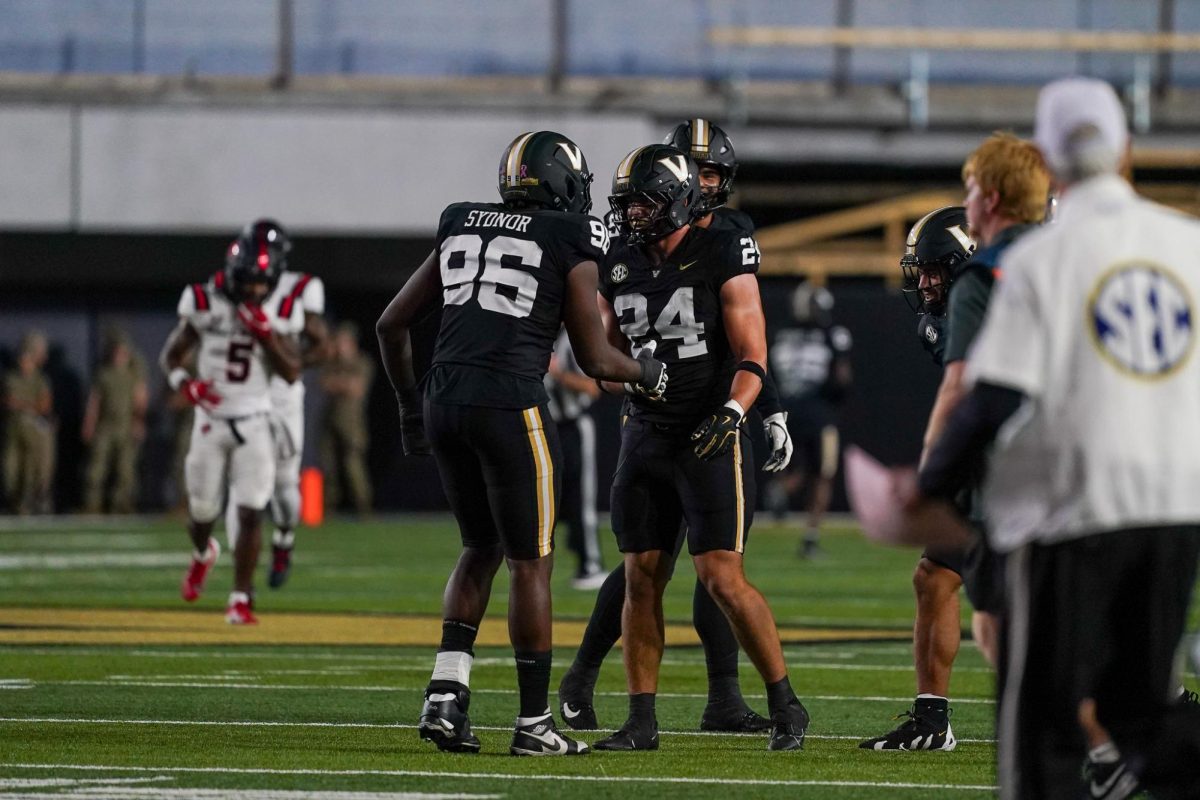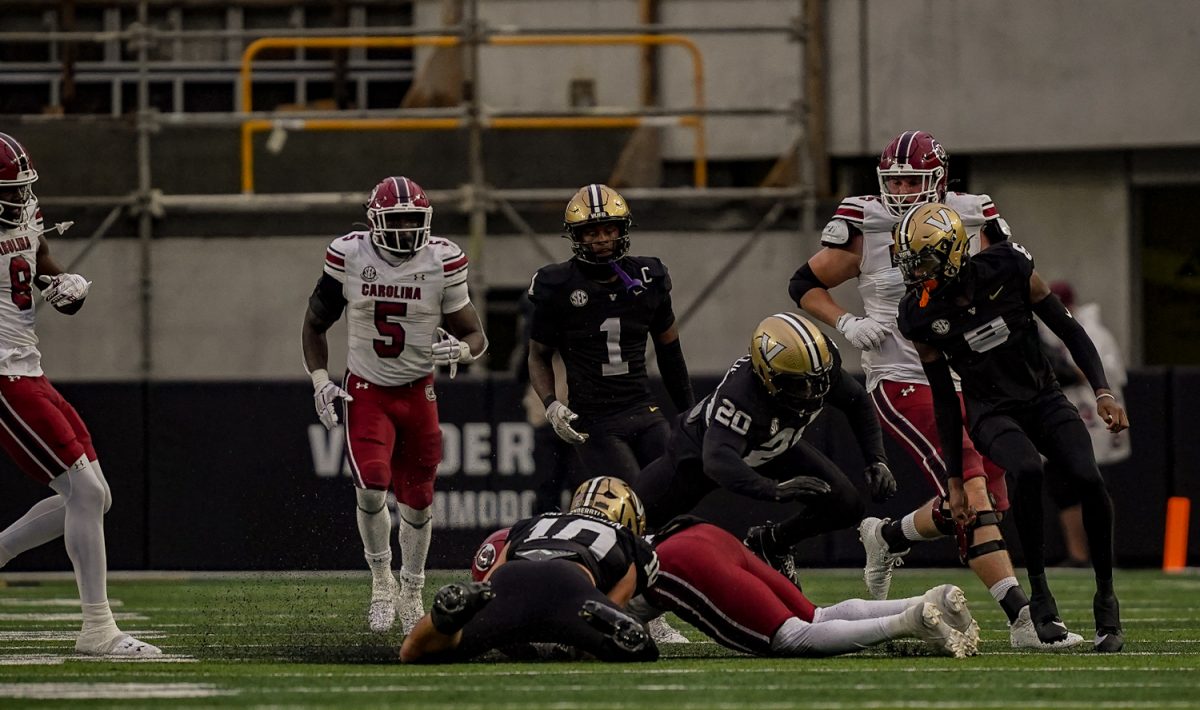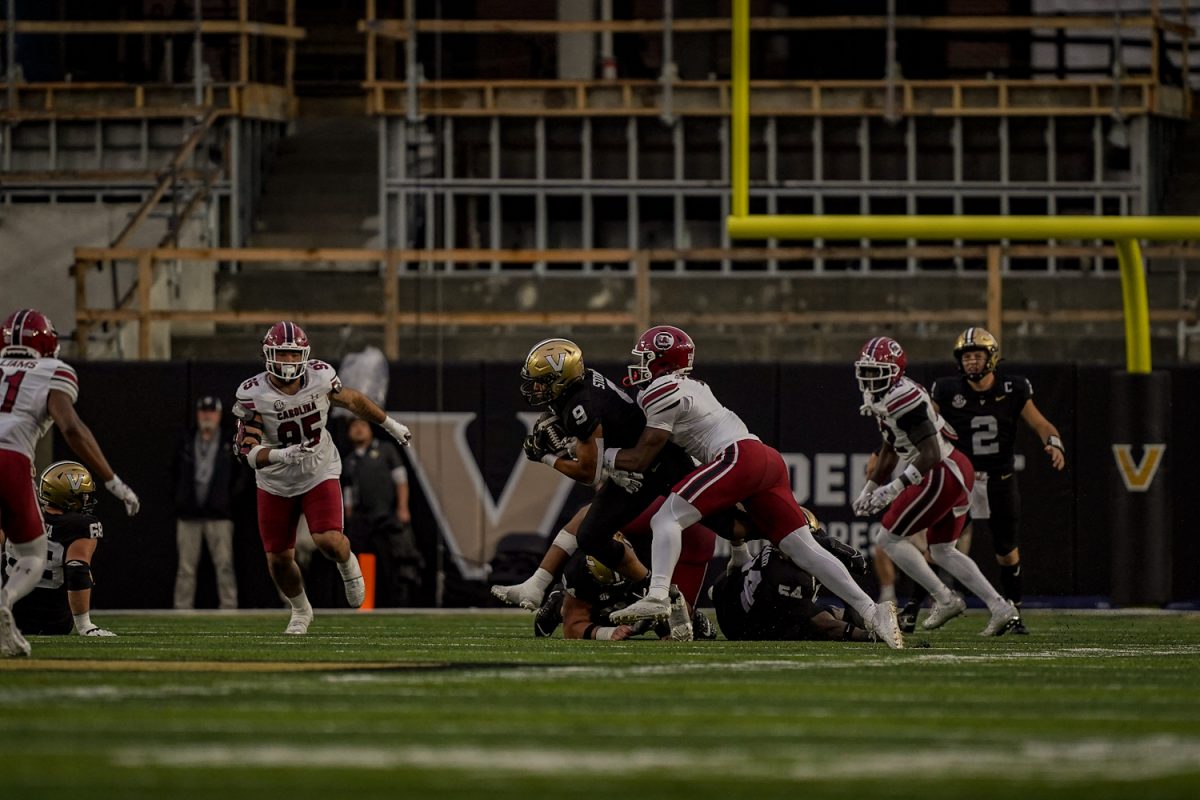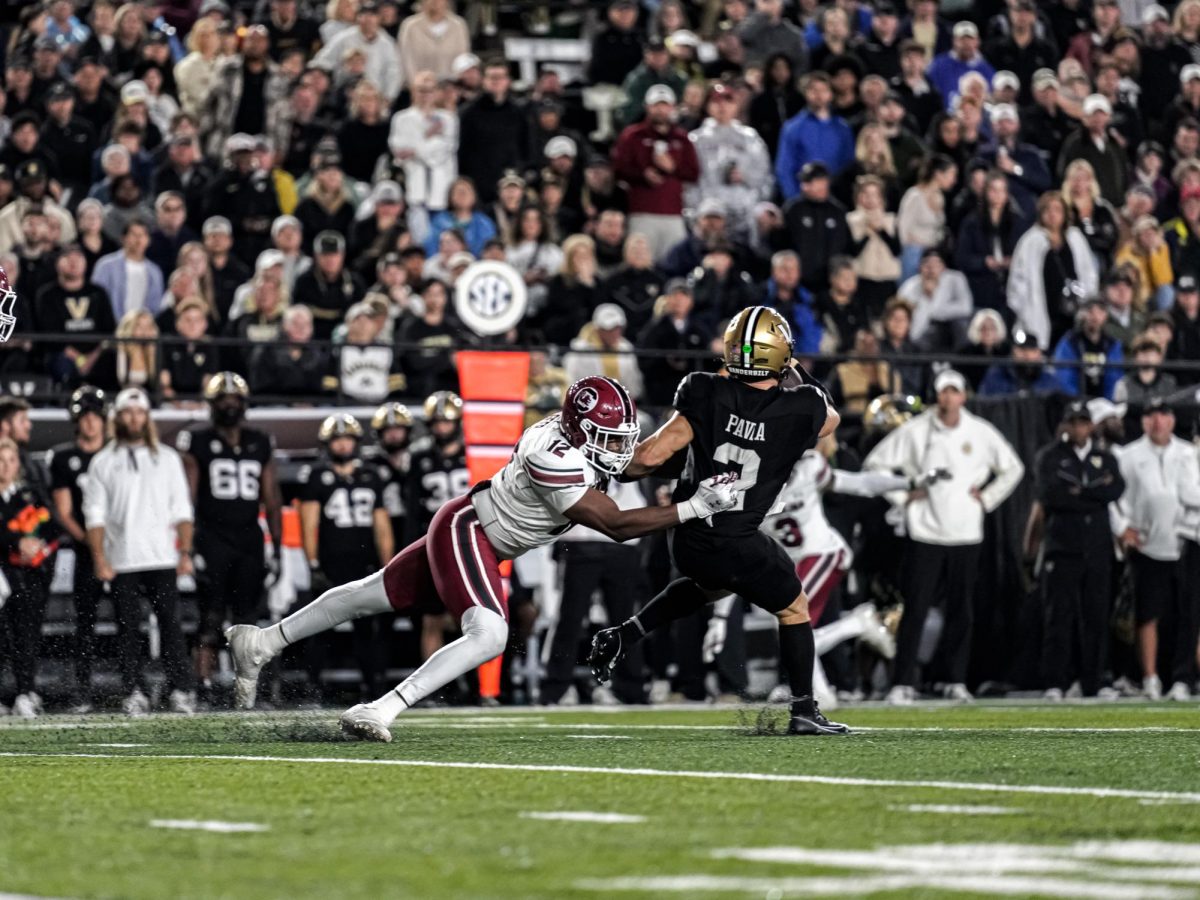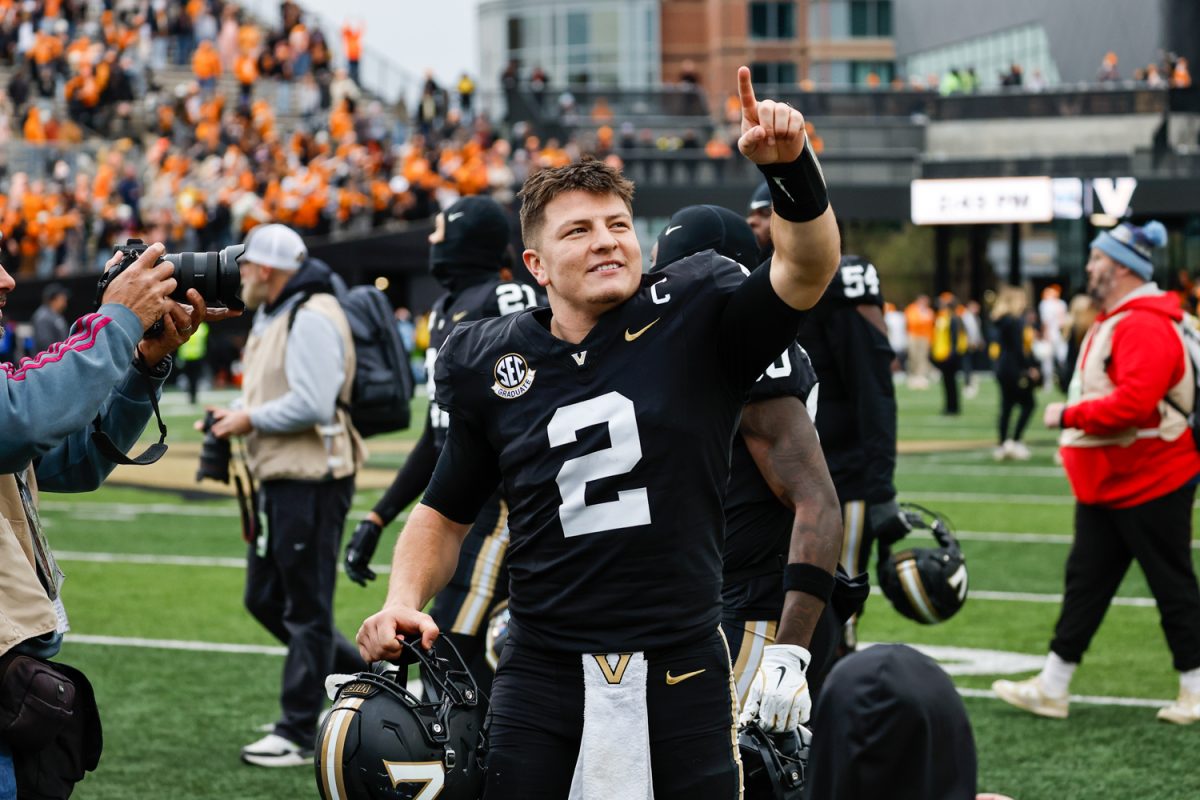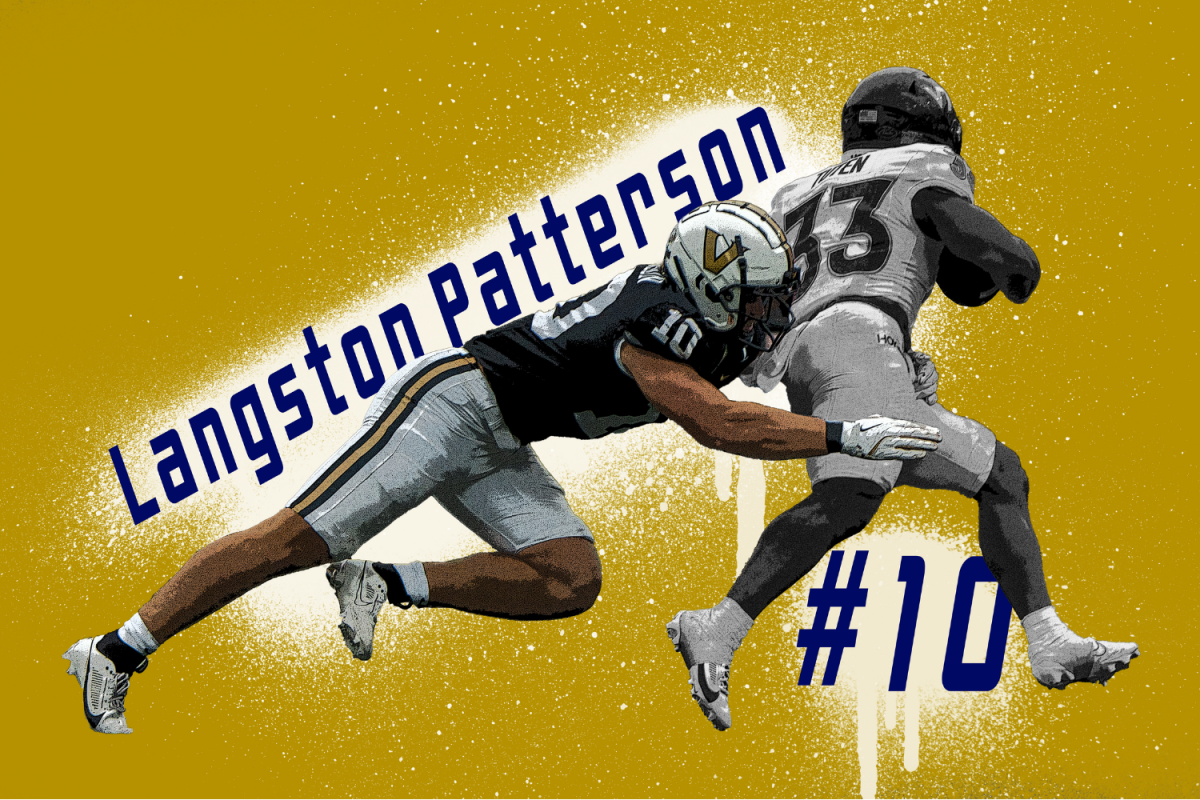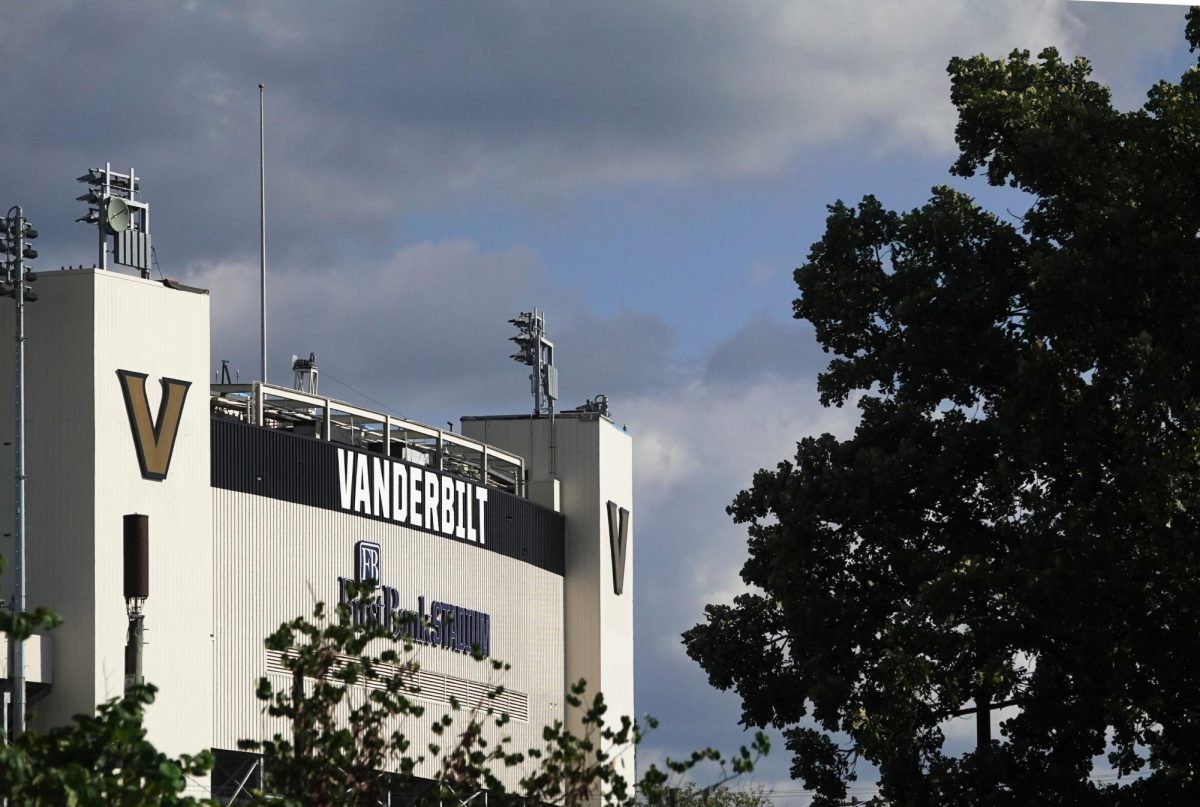Every team in the SEC has lost before November, which hasn’t happened since 2007. This could mean that the SEC is just a tougher conference this year or that teams aren’t playing as well as we’ve grown accustomed to. In light of the conference’s disappointing start, it is time to ask what could have and should have been as The Hustler looks to see what’s gone wrong with each SEC team.
1. Georgia (6-1, 4-1 SEC)
What went wrong: Carson Beck and Georgia’s passing offense
Georgia’s defense has been worse this year than the previous two years, especially on third downs, but it’s still producing wins. The Bulldogs have held five of their seven opponents to less than 15 points, which is nothing to scoff at in the SEC. Carson Beck and his offense have been a different story. Beck has thrown eight picks in his last four games, and the passing offense’s efficiency has taken a step back. The Bulldogs’ offense ranks No. 13 among SEC teams in yards per completion through the air. Not only is the offense giving away more turnovers, but it's also gaining fewer yards. For a team looking to establish its dominance in the SEC, Georgia’s passing offense has to make changes.
2. Texas (6-1, 3-1)
What went wrong: The run
Texas has the No. 1 defense in the country and the No. 17 offense. There is almost no room for improvement on the defensive end, so we must diagnose problems on offense. Texas ranks No. 60 in yards per rush attempt, as its offense relies heavily on the arms of Quinn Ewers and Arch Manning. This problem finally materialized against Georgia, as Texas rushed for only 29 yards, averaging 1.1 yards per attempt. A team needs both parts of its offense working to get quality in-conference wins. It didn’t have that last weekend against Georgia, and the Longhorns suffered for it. Texas has a talented running back room; it just needs to fit them into the offense.
3. LSU (6-1, 3-0)
What went wrong: Defensive gameplan
LSU has played many close games this season, and its opponents have exploited its defensive game plan. The Tigers shut down the passing game against South Carolina in Week Three, but they also allowed running back Raheim Sanders to rush for 143 yards and 2 touchdowns on 7.3 yards per carry. Instead, against Ole Miss, LSU’s defense targeted the run and kept lead back Henry Parrish to three yards per carry, while wide receivers Tre Harris and Cayden Lee combined for 234 yards. When one part of their defense is sharp, the other seemingly crumbles.
4. Texas A&M (6-1, 4-0)
What went wrong: Passing efficiency and close games
Texas A&M — despite a 6-1 record — hasn't been winning games by large margins, mainly due to its inefficient passing offense. Against Notre Dame in Texas A&M’s only loss, quarterback Connor Weigman went 12-for-30 before injuring his shoulder. He’s since returned, going 18-for-22 in Week Six against Missouri before throwing two interceptions against Mississippi State last weekend. Texas A&M’s defense has done extremely well this year, keeping five of its seven opponents to 20 points or less. Its offense should capitalize on this and win its games by larger margins. The Aggies’ next step? Improving their 58.2 completion percentage, which ranks second-to-last in the SEC.
5. Tennessee (6-1, 3-1)
What went wrong: The first half
Tennessee’s first-half struggles are puzzling. The Volunteers have had no problem scoring in the second half, and they’ve been able to recover from this damning weakness twice in their last three games. They run a rush-heavy offense, so naturally, they’re going to drain the clock and score fewer points than pass-oriented offenses. Still, few other teams with a similar play style have dealt with the first-half droughts that the Volunteers are. Tennessee has the fourth-best scoring defense in the country, holding teams to an average of 11.6 points. Tennessee is already near the top of the conference — if this team can start scoring in the first half, it could be a playoff lock.
6. Ole Miss (5-2, 1-2)
What went wrong: The clutch
Ole Miss has the second-best scoring defense in the country, holding opponents to an average of 10.6 points. In all but two of its games, Ole Miss has won by at least 24 points. In the five other games, the Rebels looked near-perfect on both offense and defense. The two losses were a different story. Kentucky and LSU beat Ole Miss despite the Rebels leading with three minutes left in both games. The Rebels have been crushed twice under the pressure of clutch time in one-score games. If head coach Lane Kiffin can’t lead his team through the final moments of tight contests, they’ll surely fall again.
7. Vanderbilt (5-2, 2-1)
What went wrong: The secondary
Vanderbilt has a weak secondary, and opponents with competent passing games have been abusing this all season. Georgia State beat the Commodores by completing five passes in the last minute of the game. Missouri won off of just one pass in overtime. Even in their win over then-No. 1 Alabama, the Commodores allowed Jalen Milroe to carve up their defense to the tune of three 45-plus yard throws. Vanderbilt’s secondary often looks unprepared for dynamic passing attacks, and they’re going to start losing games if it isn’t improved.
8. Alabama (5-2, 2-2)
What went wrong: Penalties and Jalen Milroe
Nobody expected Kalen DeBoer’s succession of Nick Saban to be easy, but Alabama has fallen apart over the past month. Alabama has struggled tremendously with penalties, as it compiled 15 penalties for 115 yards against Tennessee and another 90 against Georgia. The Crimson Tide seem undisciplined and as if they are stuck between the Saban and DeBoer eras. Additionally, Jalen Milroe has seemed like a completely different player since playing at Vanderbilt. In the two weeks following Oct. 5, Milroe has thrown four interceptions. Despite how disastrous this month has been for Alabama, it still has an outside shot at making the College Football Playoff. Alabama needs to play more disciplined football and work through its internal struggles to start competing again.
9. Missouri (6-1, 2-1)
What went wrong: Brady Cook
Missouri’s biggest problem seemed to be its inability to convert in the red zone. However, a simpler problem has arisen these past few games: Brady Cook is not a rush threat. This — combined with ranking below the FBS average in yards per pass attempt (7.5 yards) — has left fans wanting more from Cook in big moments. This was on full display in two bad games against Vanderbilt and Texas A&M. The Tigers have elite wide receivers in Luther Burden III and Theo Wease Jr. It's time for Cook to start capitalizing. It’s too late to find a new quarterback, but adjustments must be made.
10. Florida (4-3, 2-2)
What went wrong: Rushing defense
Florida has been playing much better football the past month, nabbing three wins and an overtime loss to Tennessee. This improvement doesn’t mask that Florida hasn’t been able to contain the run this season. The Gators are allowing 164.3 rushing yards a game on average, and their opponents know this. Tennessee ran the ball 43 times, and UCF’s running backs RJ Harvey and Peny Boone averaged 4.7 and 5.2 yards per attempt as the Knights touted the ball 40 times. Florida’s next four opponents are all ranked and will look to exploit this poor rushing defense and chew the clock. It’s on Florida to shore up its defensive line and force opponents to throw.
11. South Carolina (4-3, 2-3)
What went wrong: The offensive line
South Carolina has allowed the most sacks out of all 133 FBS teams at 32. This has severely limited the Gamecocks’ offense and produced one of the worst passing games in the SEC, as evidenced by their 186 average passing yards per game — the third lowest in the SEC. Quarterback LaNorris Sellers is a capable scrambler who picked up 247 rushing yards this year. Still, a lot is being asked of Sellers in his first year starting, and he has a 52.7 QBR — the third-lowest in the SEC — and seven fumbles, the most in college football by a player. The Gamecocks have flashed potential in close games against Alabama and LSU, but they won’t reach this potential until their offensive line does its job and protects Sellers.
12. Arkansas (4-3, 2-2)
What went wrong: Ball security
Arkansas has had an up-and-down season: Most of its games have been relatively close, including its win over Tennessee and a narrow loss to Texas A&M. The Razorbacks have been close to winning games against stronger opponents, and if they had taken care of the ball, that might’ve put them over the top. Arkansas lost two fumbles and threw an interception against LSU last weekend. In its four-point loss to Texas A&M, it also lost two fumbles and threw an interception. In a one-score, overtime loss to Oklahoma State, the Razorbacks fumbled twice and threw an interception. Taking care of the ball is the only way that Arkansas can score points, and if it wants to win close games, it has to stop turning over the ball in careless ways.
13. Kentucky (3-4, 1-3)
What went wrong: The defense
Kentucky has the 20th-worst scoring offense in FBS. When a team is averaging 20.4 points a game — like Kentucky is — it needs an elite defense to carry the load. Kentucky seemed like it had an elite defense until this past weekend. The 31 points allowed to South Carolina in Week Two were written off as a fluke from the same unit that held Ole Miss and Georgia to 17 and 13 points, respectively. That “fluke” looks less so after the Wildcats let Florida score 48 points. This has been a defensive-minded team, both out of skill and necessity. Still, the Wildcats’ defense is starting to disappear as teams abuse the weaknesses and injuries in their secondary.
14. Auburn (2-5, 0-4)
What went wrong: The coaching
Auburn’s biggest problem is intangible. This team seemingly improved on all fronts coming into this season, and statistically, some of that is visible. Quarterback Payton Thorne is having arguably the best season of his career averaging 8.9 yards per attempt, the 14th most in FBS. Aside from a blowout loss to Georgia, the Tigers have kept all their games within 10 points. Every level of play for Auburn has been unreliable, and even when it has led in the fourth quarter (see games against Oklahoma and Missouri), it has lost. Head coach Hugh Freeze has blamed a different position group every week instead of taking on accountability himself. Don’t be surprised if Freeze gets fired at the end of the season for his on-field struggles and post-game antics.
15. Oklahoma (4-3, 1-3)
What went wrong: The entire offense
Head coach Brent Venables fired his offensive coordinator, Seth Littrell, this week, which was the right move for a team ranking dead last in the SEC in rushing yards per game and second-to-last in passing yards per game. Beyond that, the team’s quarterback play hasn’t been sustainable. Michael Hawkins Jr. was replaced under center after three turnovers in his first three drives against South Carolina (an interception, a fumble returned for a touchdown and an interception returned for a touchdown). He was eventually replaced by Jackson Arnold, who started the season at quarterback before his struggles got him benched. Both quarterbacks' struggles signaled that it was time for Littrell to go. Now is the time for the Sooners to rebuild their offense.
16. Mississippi State (1-6, 0-4)
What went wrong: Everything, but we’ll focus on the defense
Most things have gone wrong for Mississippi State to end up No. 16 in these power rankings. It has been a dismal year for the Bulldogs, but the biggest weakness has been a defense that has allowed 33.3 points per game, the 18th-most of any FBS team. Its offense has put up numbers in garbage time, but those numbers really don’t mean anything. Opponents have exploited Mississippi State’s passing and rushing defenses to the tune of 449.6 yards per game. Additionally, the Bulldogs have also allowed opponents to run the 27th-most plays in FBS (70.1 plays per game), leaving their struggling defense on the field for way longer than it should be. There are no bright spots here.

